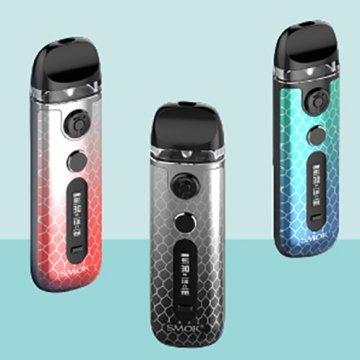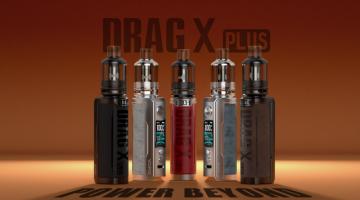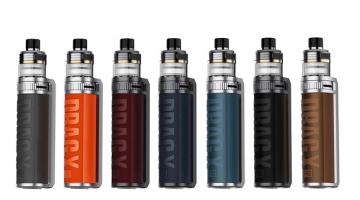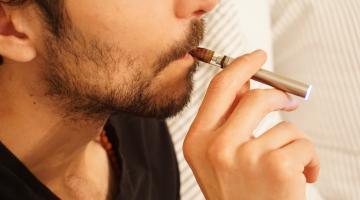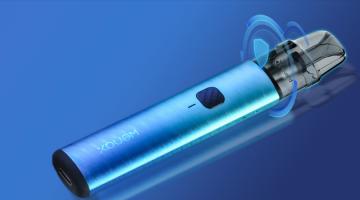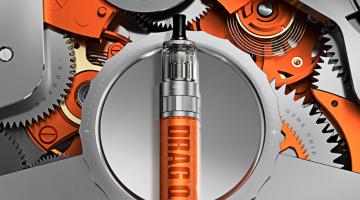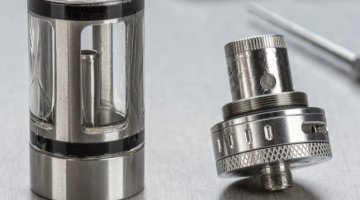Does MTL Use Less Liquid?
Over the last decade or so, vaping has become incredibly popular, largely taking over the smoking industry. People use vapes to switch from cigarettes or enjoy smoking without worrying about the health risks.
The e-cigarette is a vaping device with a rechargeable battery that comes with a cartridge loaded with flavored liquid with different chemicals and flavors. When that liquid is heated, the vapor that results from that heating is what you inhale.
There are two main types of vaping devices: mouth to lung vs direct to lung. MTL devices are considered closer in similarity to smoking cigarettes and have a more compact design.
So, does MTL use less liquid? Let’s find out.
Does MTL Use Less Liquid?
Mouth-to-lung vaping devices use less liquid than direct-to-lung vapes. This is because most MLT tanks have between 1.2 to 1.8 Ohm resistance, or if they have a higher rating, their wire is thinner, meaning there is less metal mass and higher resistance. MLT vapes need less power, around 8 to 18 watts, and less power means less liquid.
MTL and DTL Vaping: The Differences
The vaping technique that is most similar to smoking a cigarette is mouth-to-lung. After briefly holding the vaporized e-liquid in your mouth, you inhale into your lungs and then exhale again.
For various reasons, beginner vapers prefer this approach to the direct-to-lung one. But mainly because of the similarity to smoking, MTL makes the transition to vaping much simpler in the beginning.
Vaping seems less unhealthy since it uses designs like a vape pen or some vape kit and allows users to modify the amount of nicotine they inhale. Since you will not need to inhale harmful pollutants like cigarettes or tar, MTL vaping is far better than MTL smoking.
Some vapers use the same strategy when they breathe oxygen into their lungs to enjoy their preferred e-liquids. With DTL vaping, the vapor enters the lungs directly from your chosen device for a more intense experience. This is particularly popular among those that like to experiment with sub-ohms.
With MTL vapes, your e-liquid will last you longer as these devices have tanks with higher resistance, unlike DTL vapes. So, many vapers prefer MTL to DTL vapes because they are more similar to cigarettes due to the high nicotine output while lasting longer.
Which technique is better?
The answer largely depends on personal preferences. If you want to save on liquid and have a higher nicotine output, then MTL is better. Also, to successfully quit smoking, mouth-to-lung is the preferable method out of the two.
With mouth-to-lung vapes, you will get smaller vapors. They can work on lower settings and overall feel more like cigarettes.
On the other hand, direct-to-lung vapes have coils that heat up faster and produce massive vapors, which are preferred by more experienced vapers. DTL devices are also preferred due to them being aesthetically more pleasing.
Liquids Used in Mouth-to-Lung Vapes
A few essential elements are present in all e-liquids. The foundation of vape juice is a mixture of PG (propylene glycol) and VG (vegetable glycerin). The last ingredients are water, nicotine, and flavorings.
Vegetable glycerin is a viscous, colorless liquid that produces substantial clouds. Another colorless liquid is propylene glycol, but it is much thinner and ensures full flavor. Manufacturers combine these substances in various ratios to accommodate various types of vapers.
Most MTL users pick 50:50 e-liquids. This mixture produces better throat effects and even offers a ton of flavor. Vape juice gets thinner with more PG.
You can enjoy your preferred flavor profile more because the thin vape juice can quickly reach your coil and absorb into the wick more effectively. Most e-liquid brands don’t go higher than 50% PG.
The key is finding the perfect balance between your VG and PG ratio to support your preferred technique.
Nicotine Levels in Mouth-to-Lung Vapes
The nicotine strength of your vape device might significantly impact how you vape in general. You must pick vaping methods, e-liquids, and devices that work well together, and you must also pick the appropriate nicotine level.
Most e-liquid manufacturers start with 0.3mg of nicotine and gradually raise it to the most potent levels. In order to find their ideal vape hit, vapers may gradually try to increase nicotine levels.
Although picking the improper nicotine strength is not dangerous, consuming more nicotine than you are used to could cause headaches and nausea. A variety of nicotine concentrations work with MTL vaping. If you used to smoke cigarettes, you could start by selecting a strength corresponding to your daily cigarette use.
In terms of nicotine strength corresponding to smoking cigarettes, 3 to 6 milligrams equal smoking a few cigarettes every day. While 10 to 12 milligrams is the same as smoking ten or more cigarettes daily. Twenty or more cigarettes per day are similar to nicotine dosages of 18 milligrams or 20 milligrams.
Benefits of Using MTL Vapes
MTL vaping is the most suited and comfortable approach for vapers who have just given up smoking because a mouth-to-lung hit is pretty close to the experience obtained from smoking cigarettes.
In terms of flavor, mouth-to-lung vaping is thought to be the ideal method for flavor chasers. The primary cause of this is that vaping in the MTL style allows the e-liquid vapor to stay in your mouth for longer, where you have more taste receptors.
Plus, as previously mentioned, mouth-to-lung vaping is more cost-effective than direct-to-lung vaping because you use less e-liquid overall.
Conclusion
So, does MTL use less liquid? The answer to that question is yes, it does due to the aforementioned factors. This means that mouth-to-lung vapes are more cost-effective as the e-liquid will last you longer. MTL vapes are also designed to be more compact, so their tanks aren’t as big as those of DTL vapes.
More to Read:
Previous Posts:
Next Posts:

